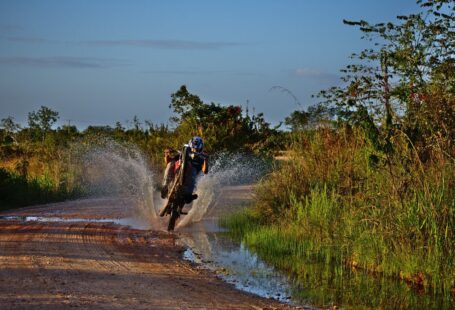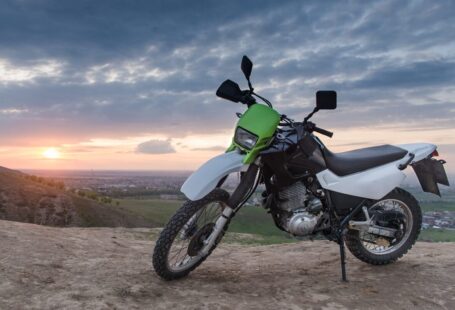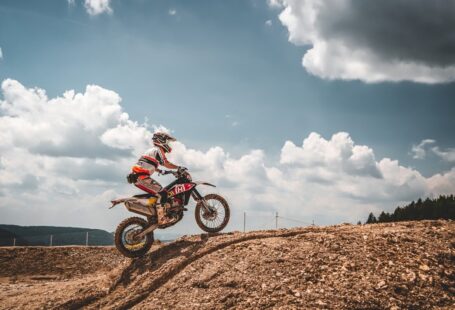A trials motorcycling course is the antithesis of a high-speed circuit. Sanctioned runs typically take place on natural terrain cluttered with logs, streams, and rock walls, with no pavement in sight. In North American competitions, riders follow a set course under the scrutiny of a judge (the sport is also called “Observed Trials”). The goal is to stay on the bike at all times–they pick up a point each time their feet touch the ground. Among those who finish within the time allowance, and without crashing, the rider with the fewest points wins.
The bikes don’t need big engines, so they run on spartan single-cylinders with small displacements, typically between 125- and 250-cc, occasionally as low as 50-cc. They do, however, need to be as light as possible. They’re stripped of anything that would make them even close to street-legal or civilized, all in the name of responsiveness. Cruise control? Nope. Aerodynamic fairings? None. A seat? Please. All told, they rarely break the 200-pound mark, nothing compared to a 452-pound Ducati Diavel, or even a street-legal 320-pound Honda CRF250L dual sport.
Riding a motorcycle slower than you walk is damn difficult, and it’s way tougher than going fast. Like on a bicycle, speed provides stability. At 5 mph, a motorcycle is liable to simply fall over, and knock its rider out of competition. Turning, for example, requires counter-balancing: Against your natural understanding of physics, you push your weight away from the turn, so the bike leans while you stay upright. “It can be frustrating if you’re not ready for it, ” LaPlante says. “Your body is such a big portion of the overall weight.”
Trials riders receive points when they touch the ground with their feet (a bad thing).
Javier Santos Romero
Then throw in obstacles like near vertical rock faces. Scaling a boulder or getting over a log requires knowing exactly how much throttle to give so that you push the front tire upward without spinning out the rear wheel and losing traction. Move too quickly, and the log or rock underneath will fly out and you’ll be on your back. The key to good trials form is to just relax, even when you feel like you’re imitating Spiderman and your mind is telling your body it’s in crisis mode. Keeping your arms at ease and letting the bike do the work is a counter-intuitive technique, but failure to do so is swiftly punished with exhaustion or a violent spill.
With no seat and no autopilot position, every second requires intense focus. “With trials, you develop a great eye, ” LaPlante says. “There’s a whole mental zone that comes from picking a line.” When navigating that line, your hands are vital. These bikes are exceptionally responsive, so every millimeter you twist the throttle or squeeze the brake has a consequence. Riders use two- or even one-finger grips to manipulate the brake and clutch. Precise sensitivity to the controls is key.
The elements that make the trials riding so awesome also make the sport hard to popularize. Riding trials bikes isn’t a cheap hobby. A new bike made by Gas Gas, for example costs north of $8, 000, and even used models are upwards of $6, 000. With such a small market, manufacturers can’t scale production for wide distribution. Add to that research and development costs to produce something so light and durable, and you get an expensive bike.
Competitions take place in the deep woods, venues not easily accessible to large crowds. Besides that, the style of riding just doesn’t lend itself well to unfamiliar spectators who equate motorsports with going fast. “It’s a tremendous sport, but it’s just not that popular in America, ” says LaPlante, who’s based in Anza, California. “We’re more into speed than anything else.” Without an understanding of the skills required to surmount these kinds of obstacles, it’s hard to be impressed by a stripped-down motorcycle moving over rocks at less than 5 mph.
Source: www.wired.com



